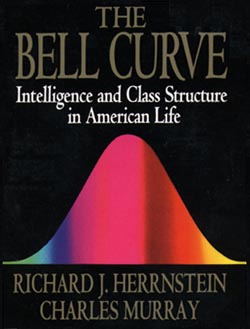Why a cookbook approach is improper?
-
All standardized tests of academic aptitude or achievement measure this general factor to some degree, but IQ test expressly designed for that purpose--measure it more accurately (Spearman, 1904)
-
At the turn of the 20th century Charles Spearman (1863-1945) used statistical methods such as Correlation and Factor Analysis to define mental abilities as factors.
-
When two apparently different abilities are shown to be highly correlated, Spearman took this as an evidence for the existence of a general factor G.
-
Thurstone asserted that perceptions have distributions between and within individuals. i.e. Not only different people have different perceptions. The same person may see things differently at different time.
-
The same principle applies well to other types of measurement. i.e. By chances you may get a "C" in the mid-term but an "A" in the final.
-
"Determinists arguments for ranking people according to a single scale of intelligence, no matter how numerically sophisticated, have recorded little more than social prejudice." (Gould, 1981, pp. 27-28)
-
Linguistic (e.g. T. S. Elliot)
-
Logical-mathematical (e.g. Stephen Hawking)
-
Interpersonal (e.g. Mother Teresa)
-
Intrapersonal (e.g. Aristotle)
-
Artistic-spatial (e.g. Picaso)
-
Musical (e.g. Yo Yo Ma)
-
Kinesthetic (e.g. Jackie Chan)
-
Naturalist (e.g. Charles Darwin)
Gardner asserted that all eight intelligences are of equal intrinsic value. It is the culture and context in which people live and work that
accord capacities a greater social value than others. In addition,
scientists from the University of Sheffield, England, provided evidence
that numerical reasoning and linguistic ability may be two independent
entitles. They examined several patients who suffered severe damage to the
language faculty of their brains, and found that their mathematical
ability is intact.
Gardner, H. (1983). Frames of mind The theory of multiple intelligence. New York: Basic Books.
Gardner, H. (1996). Leading Minds: An Anatomy of leadership. New York: Basic Books.
Ross, P. (2005 June). Math with words. Scientific American, 292(6), 28-30.
-
The data published in the Wall Street Journal (June 22, 1995) shows the rank of each state's average SAT score and average expenditure on education. Unfortunately, the data "show" the more a
state spends, the worse (on average) their SAT rank is. Does this mean spending less on education will improve SAT rank?
-
Problems with this analysis:
-
State level data may not be true within states.
-
Cost of living (and therefore expenditures) varies across the country.
-
Not everyone takes the SAT.
-
What happens when we look at data from the National Assessment of Education
Progress (NAEP) that a) was designed to measure achievement, and b) is taken by a representative sample? On contrary
to the data on the Wall Street Journal, there is a positive relationship between NAEP and expenditures.
-
Moral of the story: We cannot afford to be ignorant about how testing is used in our society, even if we do not want to use such tests in our classroom.
-
A human mind is compared to a physical body, which is composed of different faculties (muscles)
-
In weight training the motion itself achieves nothing but to make you like Arnold Schwarznegger.
-
Some learning materials may be irrelevant and inapplicable, but taking difficult tests like SAT and GRE can make you as smart as Albert Einstein.
 |
- Herrnstein and Murray (1994) found that in IQ tests Jews and East Asians,
on the average, outperform European Americans, and the mean score of White
Americans is higher than Blacks. The asserted that some portion of these differences are genetically (racially) determined.
- The bell-curve (a spread of ability) exists in spite of intervention (e.g. education, affirmative action...etc)
|
- Geary, D. C., Salthous, T. A., Chen, G. P., and Fan, L. (1994). Numerical
cognition: Are U.S.--East Asian ability differences a recent phenomenon?
- Younger and older adults from the U.S. and China were tested.
- It indicated no consistent ability differences, except the younger Chinese
adults substantially outperformed the younger Americans in arithmetic.
- The overall pattern suggests that the advantage of Chinese adults over
American adults in arithmetic is a recent phenomenon.
Philosopher Clark
Glymour (1998) gave a philosophical argument against the bell curve theory in
"What went wrong? Reflections on science by observation and the bell curve",
Philosophy of Science, 65, 1-32. The major argument is that an observed
statistical property is not qualified to be a causal inference.
Reviewing the intelligence debate at its meeting of November 1994, the Board of Scientific Affairs
of the American Psychological Association established a Task Force charged with preparing a report (Neisser et al.,
(1996). "Intelligence: Knows and unknowns". American Psychologist, 51,
77-101) to examine the claims made by Herrnstein and Murray.
The summary of the report can be viewed
here.
Review Quiz
Navigation

Press this icon to contact Dr. Yu via various channels
|

